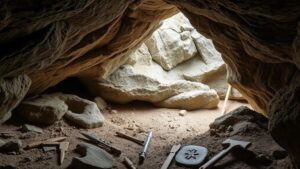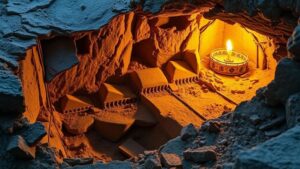Techniques for Locating Coin Stashes Hidden in Masonry or Rock Crevices
Techniques for Locating Coin Stashes Hidden in Masonry or Rock Crevices
The pursuit of hidden treasures, particularly coin stashes tucked away in the unassuming crevices of masonry and rock, attracts historians, archaeologists, and hobbyists alike. The thrill of uncovering concealed wealth often hinges on utilizing a blend of traditional techniques and modern technology. This article delves deep into the effective methods for locating such hidden treasures, supported by concrete examples and statistics where relevant.
Understanding the Context: Why Coins are Hidden
Before delving into the techniques of locating hidden coin stashes, it is essential to understand the historical context in which coins might be concealed. Throughout history, individuals have hidden coins for a multitude of reasons, such as:
- Economic hardship: During times of war or economic instability, individuals often buried their wealth as a means of protection.
- Burial rites: Some cultural practices included burying coins with loved ones as a part of funeral customs.
- Prohibition and tax evasion: In eras of prohibition, individuals concealed their possessions to avoid confiscation.
Understanding these motivations can guide the search strategy, focusing efforts on likely locations based on historical behaviors.
Site Selection and Historical Research
Effective treasure hunting begins with diligent research. Analyzing local history and geography provides vital clues that can lead to finding hidden stashes. Here are practical steps for site selection:
- Study historical maps: These maps can reveal old properties or locations known for economic activity such as trading posts or market squares.
- Leverage local archives: Newspaper articles, tax records, and real estate transactions may supply information about individuals who owned properties or lived in areas where coins are likely to be hidden.
For example, a case study in Cornwall, England, revealed that local historians unearthed stories of miners who hid their gold in rock crevices, leading to focused endeavors in mining towns where coins were anticipated.
The Role of Physical Inspection
Once potential sites are identified, physical inspection becomes vital. Paying attention to certain characteristics in the land and structures can enhance the chance of success:
- Look for wear and tear: Eroded or crumbling masonry could indicate a historic hiding spot that might reveal concealed objects.
- Inspect natural rock formations: Crevices, cavities, and depressions in rocks can serve as excellent hiding places for coins.
For example, in a famous hunt for hidden Viking treasure in Norway, explorers utilized drones to scan rugged terrains, identifying potential hiding spots that had previously gone unnoticed.
Employing Technology: Metal Detectors and Ground Penetrating Radar
The modern treasure hunter often combines traditional methods with sophisticated technologies. Tools such as metal detectors and ground penetrating radar (GPR) are invaluable:
- Metal detectors: These devices can differentiate between types of metals and pinpoint possible treasure locations. Models designed for deep searching may be particularly useful.
- Ground Penetrating Radar: GPR allows for subsurface scanning, making it possible to detect anomalies without disturbing the ground. This technology is especially beneficial in densely constructed areas.
A study conducted by the University of California demonstrated that GPR achieved a success rate of over 75% in identifying hidden objects beneath structural surfaces, affirming its efficacy in treasure hunting.
Ethical Considerations and Legal Compliance
When embarking on treasure hunts, it is imperative to adhere to legal and ethical standards. Regulations may vary based on geographical jurisdictions:
- Understand the law: Prior to digging, research local laws regarding metal detection and treasure hunting. Some locations may require permits or may be designated as protected areas.
- Respect property rights: Always obtain permission for searches on private properties, as unauthorized trespassing can lead to legal ramifications.
For example, a treasure hunter in Maryland faced legal challenges after failing to secure permissions, emphasizing the importance of responsible searching practices.
Conclusion and Takeaways
Locating coin stashes hidden in masonry or rock crevices requires a well-structured approach that integrates historical research, physical inspection, technological tools, and ethical practices. By employing these varied techniques, treasure hunters can enhance their chances of success. Here are key takeaways for aspiring seekers:
- Conduct thorough historical research to identify likely hiding spots.
- Use both physical inspections and modern technology to uncover potential treasures.
- Always comply with legal requirements and respect property rights throughout the hunt.
The fascinating world of treasure hunting awaits those willing to uncover the stories hidden in masonry and rock, and with the right techniques, the bounty could be only a search away.


